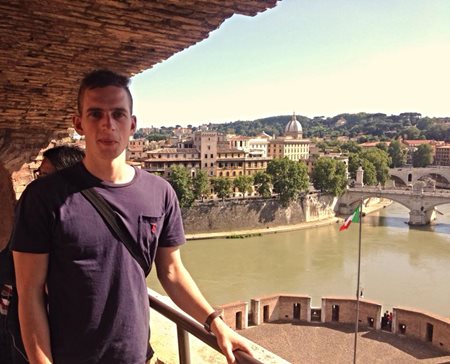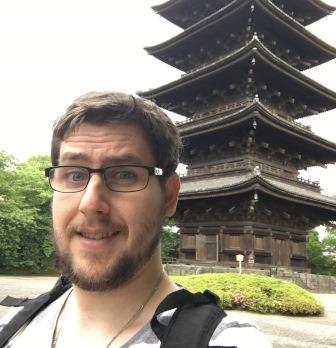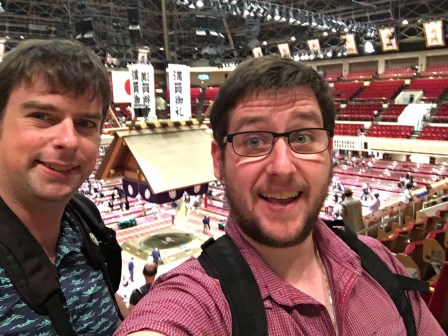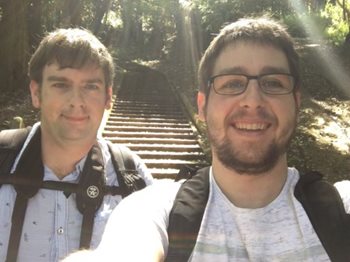
Geoff
Travelling is one of the most rewarding experiences I believe you can have in life. It is important you don't let your haemophilia stop you from exploring the world! I myself have haemophilia and I am a massive believer in not letting that get in the way of anything. A few simple steps can be taken to ensure that you are able to stay on top when away from home.

I encourage you to speak to your Haemophilia Treatment Centre about where you plan to travel. They will be able to help you prepare any documents that you need and they will be able to help you plan for your visit and let you know what to do and how to be prepared for particular countries or airlines.*
When transporting product, chances are you don't want to end up in a foreign prison!  Best way to avoid any hold ups is to ensure you have tonnes of documentation explaining why you have the gear. I just declare my treatment to anyone who might find it in my bag. I find language barriers can cause confusion, so being overtly open about transporting medication defuses any possible issues. Again, your Haemophilia Treatment Centre will be able to provide you with all the necessary documentation about your treatment.
Best way to avoid any hold ups is to ensure you have tonnes of documentation explaining why you have the gear. I just declare my treatment to anyone who might find it in my bag. I find language barriers can cause confusion, so being overtly open about transporting medication defuses any possible issues. Again, your Haemophilia Treatment Centre will be able to provide you with all the necessary documentation about your treatment.
The least fun thing to have in the back of your mind but perhaps the most important, is to be a little bit careful. You are likely thousands of kilometres away from home and when travelling it is easy to get carried away in a good moment. The last thing you want to do is end up with a bad injury in a foreign country; immerse yourself in the culture and experience everything you can, but it pays off to double check your decisions.
Get out there!
Sam

I have severe haemophilia type A, and I formerly had an inhibitor, which was treated when I was 15. But, long story short, I am now on prophylaxis and my friends and I recently decided that we would like to travel to Japan for 5 weeks over the December-New Year period.
Which meant that I would now have to work out how I was meant to transport what amounted to a “Shedload” of factor VIII, and what, if any regulations there were for
My first port of call was my Haemophilia Treatment Centre and the team.
And my second port of call was the Japanese Embassy.
In terms of taking factor out of Australia, there weren’t any documents which I needed to complete. However, you should always double check to make sure this is the case with your treatment team and social worker.
BUT I was required to complete documents in order to bring my factor into Japan. The application is called a Yakkan Shoumei, and the form basically required me to complete it, and provide some documentation and information about the products, a letter from my specialist confirming I needed the products, and to advise how much I was bringing into Japan (also including details about needles, syringes and alco-wipes), and my flight details (when I was arriving and leaving).
I had to post this to Japan, including with it a self-addressed envelope, and a “Coupon international de réponse” (basically a stamp which they use on your envelope to return the certificate back to you).

I did take one spare treatment with a couple of spare syringes and needles “just in case”.
But all was well, kind of, my application was approved, and I was ready to move forward with planning my trip. But I had to pack a lot of factor. I also had to pack a sharps container and warm clothes, because as you might not know, Japan is in the northern hemisphere, and December/January is actually winter time.
And while some might be travelling for skiing, I was sightseeing with friends. So I had to fit all of the above with jumpers, long sleeve shirts, pants and jeans, scarf, puffy snow jacket, thermal cloths, boots (hiking boots) sock and undies, and my regular toiletries for 5 weeks of travel, and any cords for the electronic items I was going to take as carry-on (psp, phone, camera, Wi-Fi router, power board & power plug converter).
Not an easy feat. Not even mentioning one very important factor (pun intended). My factor needs to be refrigerated. Some of you may have seen the fridges which you get at hotels… How the “heck” was I going to fit all this in a tiny fridge while travelling?
Well I had a plan! While I was required to arrive with my factor packaged up “as is” in the event that it was checked, I would arrive and re package it myself when I arrived at the hotel on the first night, and through some trial and error I found I could fit it all.
And the great thing was, as the trip progressed the amount of factor and equipment reduced even more, until it was all gone, and the “oh no my trip is over” reality hit back in, and all the space formally reserved for factor was taken up by gifts, toys and other random items.
During this trip my friends and I travelled from Sydney to Tokyo to Hiroshima to Osaka to Nagano to Tokyo to Kyoto to Osaka to Mount Fuji to Tokyo back to Sydney.
And while this does look somewhat backwards and forwards, and it is, we were travelling with only a rough plan, which left us with several days which were completely unplanned. I wouldn’t recommend this, but we did it anyway, and we decided on and booked these unplanned days roughly half way through our trip, which ended up being an extra day in Osaka, and a trip to Mount Fiji (where we were snowed in by a blizzard but it was a great time all the same).

During this time, we stayed in regular hotels and Ryokans (Trad
itional Japanese Hotels), and I made sure to check that they all had a refrigerator in
them, and in the event I wasn’t sure, I contacted the hotel and asked.
While I’m sure that’s enough to make you never want to travel, I will say, I went back again this year, following the same process, but this time in spring to catch the end of the Cherry Blossoms in April/May for 3 weeks.
While very few people would say travelling is easy when you have a bleeding disorder, it is good to know that it can be done. All it takes is a little bit of planning and preparation!
So don’t let it hold you back from exploring the wide world, and having your own adventures.
Don’t forget about travel insurance.
You may be asked to disclose that you have a bleeding disorder and pay a higher premium. Shop around to find the best cover. Make sure you read the fine print and know what you are covered for, and what you aren’t (such as riding a motorbike).
For overseas travel you will need documentation for customs and security.
Talk to your Haemophilia Treatment Centre about this at least 3 months before you travel so you have plenty of time to prepare.
* * Keep in mind that travelling in a developing country can be challenging and many countries don’t have haemophilia treatment centres – and there may be no access to clotting factor. You might be surprised to learn that the level of care is not the same as what you are used to, or there are costs involved for medical care. It is important to talk to your Haemophilia Treatment Centre as they will be able to help you plan and advise you on what needs to be done and help with the medical documentation required.
Are you travelling soon?
Not sure where to start? Or do you just want to check you have everything you need?
Visit factoredIn.org.au on what to do and who to talk to.
Factored In has all the most up to date information about travelling when you have a bleeding disorder – check out the TRAVEL section.
Are you planning to travel overseas?
Do you know what visa you need?
If you want more information, have a good look at the Australian Government website smartraveller.gov.au for advice on travelling to specific countries, visas including studying overseas and things to aware of in the country you’re travelling to.
Visit Factored In at www.factoredin.org.au to read the full story of Sam’s trip to Japan and other youth stories about their travelling experiences.
Haemophilia Foundation Australia acknowledges the Traditional Owners and Custodians of Country throughout Australia, the land, waters and community where we walk, live, meet and work. We pay our respects to Elders past and present and extend that respect to all Aboriginal and Torres Strait Islander peoples.
Sign up for the latest news, events and our free National Haemophilia magazine